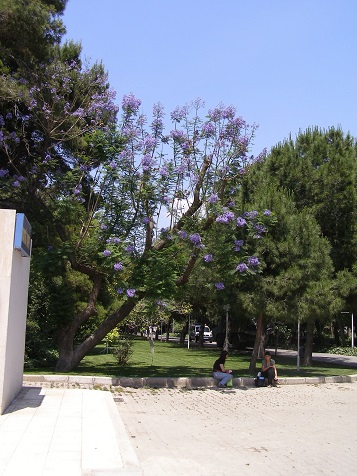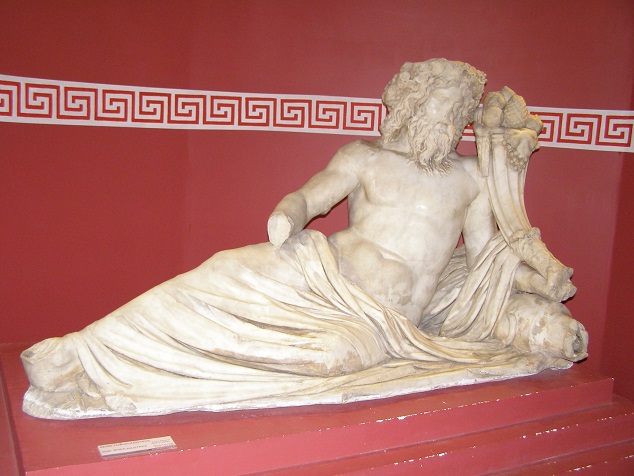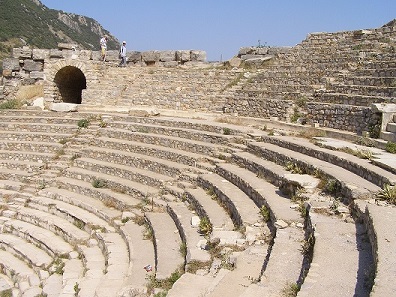By Catherine Tsounis
Milton, Giles. PARADISE LOST: Smyrna 1922, Perseus Book Group, New York, 2008.
“PARADISE LOST, Smyrna 1922, The Destruction of a Christian City in the Islamic World” has eyewitness accounts and memories of survivors, many interviewed for the first time. The descendants of the Levantine Western European wealthy families’ letters and memories of survivors, many interviewed for the first time present an image of a Christian city free to live in the Ottoman Empire.

The non—Muslim civilians of Smyrna believed that American and European warships would intervene if and when the Turkish Calvary decided to enter the city. “PARADISE LOST” describes the quality of destruction. Allied battleships Smyrna harbor were given strict instructions not to rescue Greeks and Armenians who were tortured, raped, and killed before their eyes. George Horton described this in his book “Blight of Asia.” During the 100th Anniversary of the Asia Minor catastrophe, original sources should be read. My impression? Everyone who lived in Smyrna in 1922 who went to Greece went poor and stayed poor for three generations. They had a high standard of living under the Ottoman Turks that was destroyed by interference of Western powers who wanted the wealth of the Ottoman Empire. If life was so bad under Ottoman rule, why is it one hundred years later everyone cries for the lost lands and wealthy lifestyle before the Western powers interfered and deserted the Christians?
We have all read in the history books of the sacking and destruction of cities. No one expected to relive this in 1922. American Consul, George Horton said “ one of the keenest impressions which are brought away was the feeling of shame that I belonged to the human race.” The New York Times made a bold statement of fact: Smyrna wiped out.1

Author Milton proves in the 426 pages that Western governments who created this crisis, displayed callousness towards their own nationals. They abandoned refugees to their fate, so not to jeopardize the chance of striking rich deals with the new victorious Turkish regime. Missionary Asa Jennings extraordinary rescue operation in the modern age saved multitudes. Two thousand years of Christian civilization in western Anatolia created a new country: Ataturk’s Turkish Republic.
“The Commandments of the Comite Union and Progress (sic)” was the minutes of a secret conference attended by the minister of the Interior, Talaat Bey, and others in 1914. The outline arrests, deportations, marches, execution of all males, priests, and teachers. Only girls and children were to be islamicized.2 Plans were meticulously executed exactly as written. This document was filed away in the public office of the Director of Public Safety in Constantinople. It was forgotten.
What makes this book stand out to the readers is Consul George Horton listening to two American journalists’ conversation. Constantine Brown and John Clayton described the terrible events on the USS Litchfield ship, as the Turkish forces were occupying Smyrna. One of the men tore his account of the day’s events. “I can’t send the stuff,” he said to his colleague. “It’ll harm me clearly at Constantinople.” The man exchanged notes, agreed that American Admiral Bristol would be furious if he read such stories.Adm. Bristol wanted the world to be ignorant. Turkish straw cities engineered not must be unknown. Journalists Brown and Clayton promise to protect American interests as a condition of the passage to Constantinople on the ship. Instead, they became the Greek atrocities
.

Horton was horrified by what he was hearing. ”It struck me as curious, that men in the presence of one of the most spectacular dramas of history should think in their ability to hurry away to find something that would offset it.” The two journalists authored a shocking article on exactly what did not take place. They wrote “The discipline and order of the Turkish troops have been excellent,” in a report published in the Daily Telegraph 1922. “When one considers they just marched through a country laid waste by the Greek army, with thousands of Muslims slain, this is nothing short of remarkable. After 48 hours of the Turkish occupation, the population has begun to realize they are not going to be a massacre.”4Fake News. It took one hundred years later for the truth to be revealed.
Milton reveals that the British ships were allowed after the evacuation deadline to enter the harbors of Urla, Chesme and Ayvalik f your lot judgment to take away tens of thousands of Christians. Turkish General Noureddin let them do the evacuation, because it was in his best interest to cooperate with Allied powers. The Allied powers had become the instruments of the nationalists’ domestic policy: to rid Turkey for the last time of its troublesome minorities.
Milton paints a portrait of the survivors lives in Greece, which is handed down to each generation. The grim reality was that they were penniless, unemployed, homeless, and treated as third class citizens. Many Greek and Armenian families emigrated all over the world. Many never recovered the loss of all their possessions.

George Horton wrote what his eyewitness account in his book “The Blight od Asia” published in 1926. It criticized the Turks and the policy of the American government. His book was heavily criticized by the American establishment.
The question is why would no one help victimized Christians in Greece? All aid went to Kemal Ataturk’s Turkish government. Giles Morton tackles this question directly. American Admiral Mark Bristol remained pro-Turkish to the end, urging the State Department not to get involved in the refugee crisis in Greece. American bureaucrats read his memos with interest and declared themselves inclined to agree. Much of their aid went to Kemal Ataturk Turkey.5 Take it out of the public library and understand 2022 that studying the history of demise of a Christian city in “PARADISE LOST”.

References:
- Milton, Giles. PARADISE LOST: Smyrna 1922, Perseus Book Group, New York, 2008, p. 6.
- Milton, p. 88.
- Milton, p.288.
- Milton, pp.286-87.
5.Morton, p. 375.
Photos:
Photo 1- PARADISE LOST, Smyrna 1922
Photo 2- Izmir Museum, on site of old Greek quarter burnt in 1922.
Photo 3- Izmir Museum
Photo 4- Ephesus
Photo 5- Ephesus